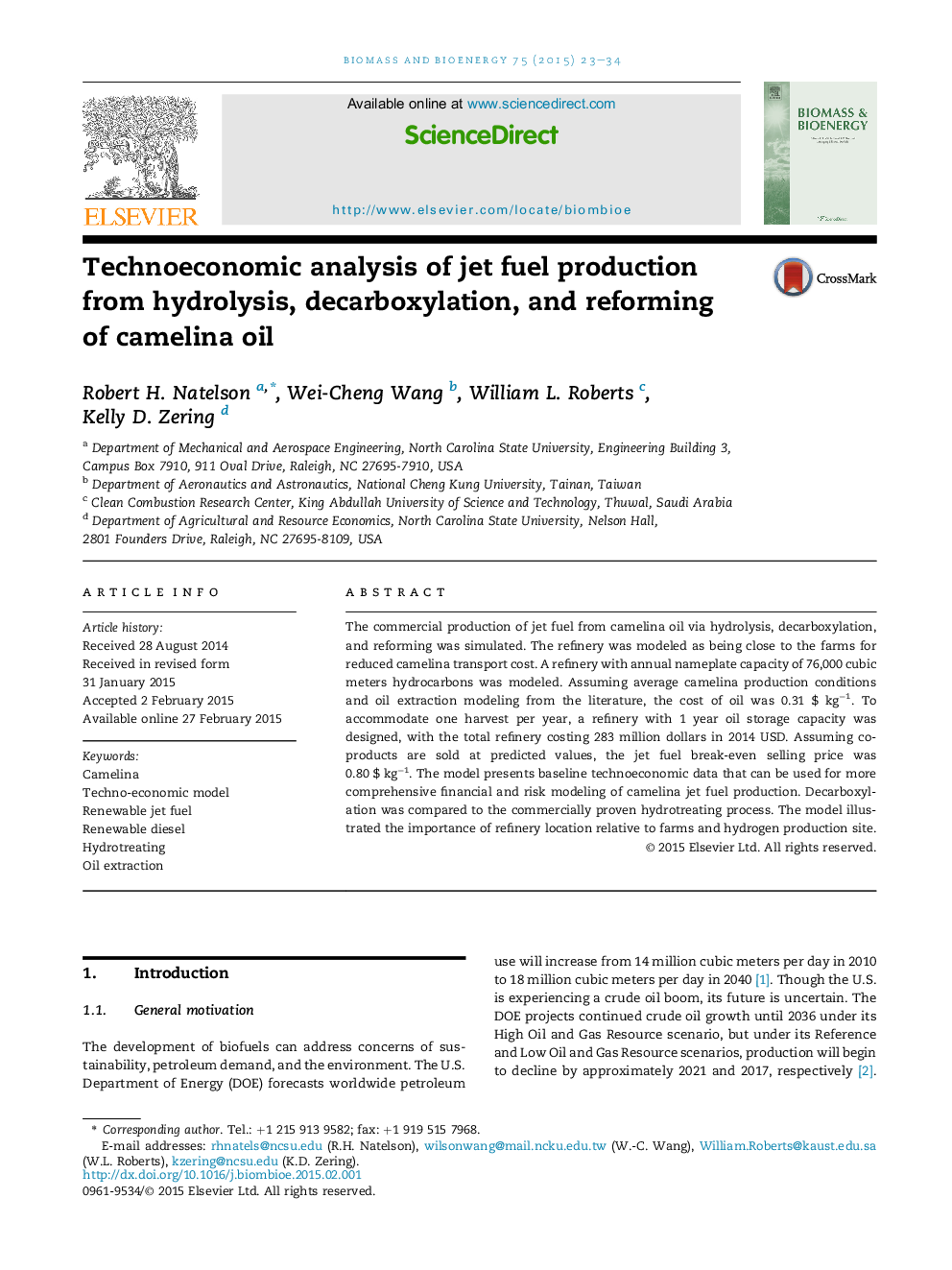| کد مقاله | کد نشریه | سال انتشار | مقاله انگلیسی | نسخه تمام متن |
|---|---|---|---|---|
| 676734 | 1459818 | 2015 | 12 صفحه PDF | دانلود رایگان |
• The capital costs, operating costs, and returns of a biofuel process are modeled.
• Camelina oil is hydrolyzed, decarboxylated, and reformed to jet fuel.
• One year of oil storage is included assuming one camelina harvest per year.
• Camelina oil delivery and hydrogen gas delivery are included.
• Under baseline assumptions, the jet fuel break-even selling price is $0.65/L.
The commercial production of jet fuel from camelina oil via hydrolysis, decarboxylation, and reforming was simulated. The refinery was modeled as being close to the farms for reduced camelina transport cost. A refinery with annual nameplate capacity of 76,000 cubic meters hydrocarbons was modeled. Assuming average camelina production conditions and oil extraction modeling from the literature, the cost of oil was 0.31 $ kg−1. To accommodate one harvest per year, a refinery with 1 year oil storage capacity was designed, with the total refinery costing 283 million dollars in 2014 USD. Assuming co-products are sold at predicted values, the jet fuel break-even selling price was 0.80 $ kg−1. The model presents baseline technoeconomic data that can be used for more comprehensive financial and risk modeling of camelina jet fuel production. Decarboxylation was compared to the commercially proven hydrotreating process. The model illustrated the importance of refinery location relative to farms and hydrogen production site.
Journal: Biomass and Bioenergy - Volume 75, April 2015, Pages 23–34
